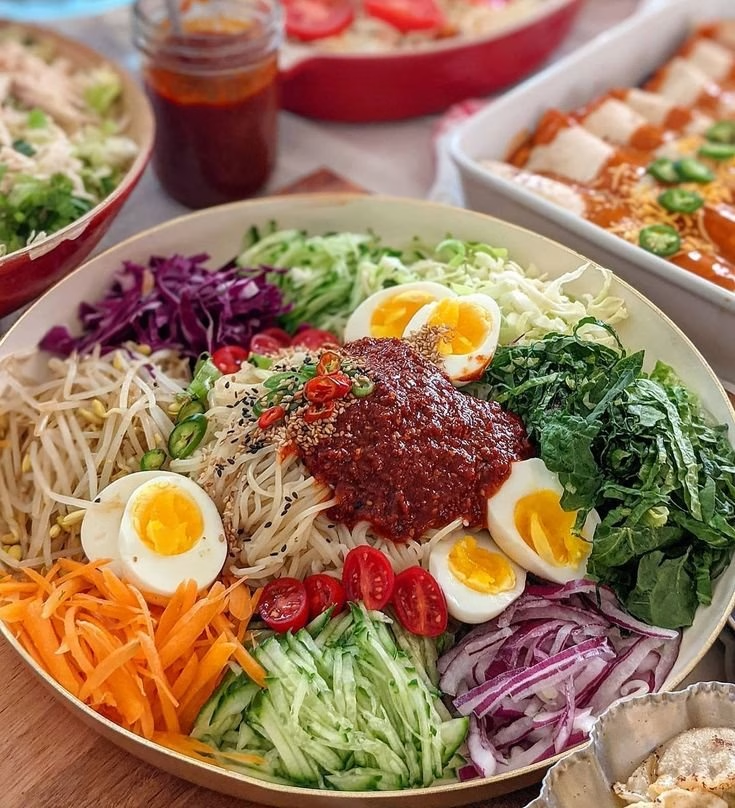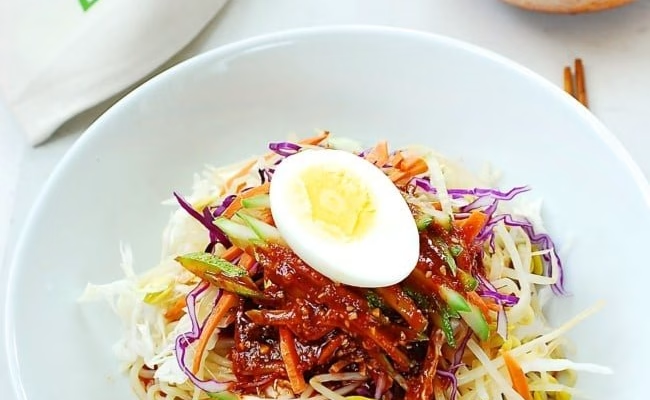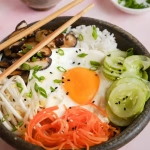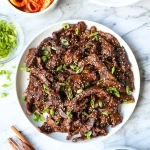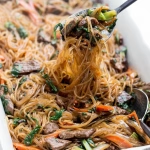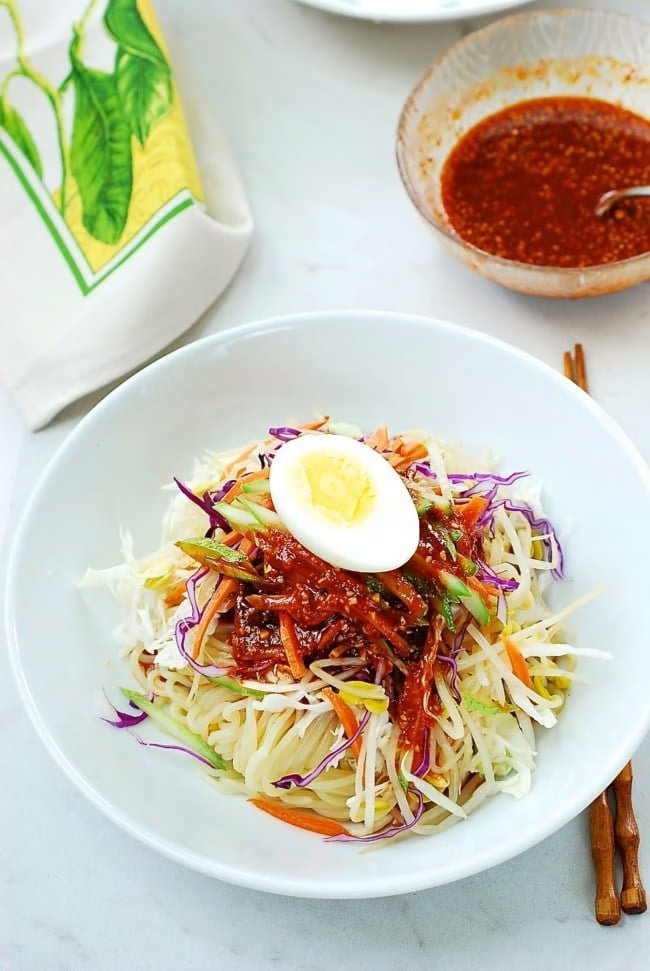
If you’re searching for a mouthwatering dish that brings the heat in the most delightful way, look no further than Jjolmyeon Bibim (Spicy Noodles). This Korean cold noodle dish, bursting with flavor and texture, is beloved for its unique blend of spicy, tangy, and sweet elements. Originating from Korea, Jjolmyeon is traditionally enjoyed during hot summer days, but honestly, who needs an excuse to indulge in these delightful noodles? In this article, you’ll discover how to make Jjolmyeon Bibim at home, explore its tantalizing ingredients, and even learn some nifty variations to cater to different dietary preferences.
By the end of this guide, you’ll be ready to impress your friends and family with a homemade Jjolmyeon Bibim (Spicy Noodles) experience that’s sure to be a hit at your next gathering. Get those chopsticks ready; it’s time to dive into the world of spicy noodles!
Ingredients
| Ingredient | Measurement | Description |
|---|---|---|
| Jjolmyeon noodles | 200 grams | These chewy wheat noodles are the star of the dish, providing that delightful texture. |
| Vegetables (cucumber, carrot) | 1 cup (thinly sliced) | Fresh vegetables add a crunchy contrast to the noodles, enhancing the overall experience. |
| Sesame oil | 1 tablespoon | This oil is crucial for adding a rich, nutty flavor to your Jjolmyeon Bibim (Spicy Noodles). |
| Gochujang (Korean red chili paste) | 2 tablespoons | The heart of the sauce, gochujang brings heat and sweetness to this dish. |
| Garlic (minced) | 1 teaspoon | Fresh garlic enhances the aroma and depth of flavor in Jjolmyeon Bibim (Spicy Noodles). |
| Vinegar (preferably rice vinegar) | 1 tablespoon | A splash of vinegar adds a tangy kick that balances the spiciness perfectly. |
| Sugar | 1 teaspoon | Just a hint of sweetness to round off the flavors makes the dish sing. |
| Sesame seeds | 1 tablespoon | These little nuggets of flavor not only taste great but also add a decorative touch. |
| Green onion (chopped) | 1 stalk | Aromatic green onions provide freshness and brightness to the dish. |
Step-by-Step Instructions
- Step 1: Cook the Jjolmyeon Noodles – Start by boiling a pot of water. Add the Jjolmyeon noodles and cook according to package instructions, usually about 6-8 minutes. When tender, drain and rinse under cold water to stop the cooking process and maintain the chewy texture.
- Step 2: Make the Sauce – In a mixing bowl, combine gochujang, sesame oil, minced garlic, vinegar, and sugar. Mix well until the sauce is smooth and all ingredients are combined into a vibrant red paste.
- Step 3: Prepare the Vegetables – While the noodles cool, slice the cucumber and carrot into thin strips. The thinner, the better! This adds a delightful crunch and helps the flavors meld together in the final dish.
- Step 4: Combine Ingredients – In a large mixing bowl, add the cooled noodles, sliced vegetables, and the sauce you just made. Toss everything together gently but thoroughly until the noodles are perfectly coated with that delicious spice.
- Step 5: Serve & Garnish – Plate your Jjolmyeon Bibim and sprinkle with sesame seeds and chopped green onion. For a fun twist, you can also add a soft-boiled egg on top if you like!
Pro Tips
- For an extra crunch, consider adding toasted seaweed strips as a topping.
- Feel free to substitute vegetables based on the season or your preferences. Bell peppers and radishes are great alternatives!
- Adjust the spice level by adding more or less gochujang. Start with a little and taste as you go.
- Let the noodles sit in the sauce for a few minutes before serving for even better flavor.
- If you like it cold, prep the dish ahead of time, refrigerate, and enjoy it chilled!
Nutritional Information
| Nutrient | Per Serving |
|---|---|
| Calories | 360 |
| Protein | 8g |
| Carbohydrates | 60g |
| Saturated Fats | 1g |
| Fiber | 3g |
| Cholesterol | 0mg |
| Sugars | 5g |
| Fat | 8g |
FAQs
What is the best way to store Jjolmyeon Bibim (Spicy Noodles)? You can keep leftover Jjolmyeon in an airtight container in the refrigerator for up to 2 days. Just give them a good toss before serving again.
Can Jjolmyeon Bibim (Spicy Noodles) be made vegan or gluten-free? Absolutely! For a vegan version, skip any animal products and use a gluten-free noodle alternative like rice noodles.
What are the best side dishes to serve with Jjolmyeon Bibim (Spicy Noodles)? Traditional accompaniments include pickled radish or a refreshing cucumber salad. These help balance the spiciness.
How long does it take to prepare Jjolmyeon Bibim (Spicy Noodles)? This recipe can be prepared in about 30 minutes, making it perfect for a quick weeknight dinner!
Can I freeze Jjolmyeon Bibim (Spicy Noodles) for later? It’s best enjoyed fresh, but you can freeze plain noodles. The sauce and veggies are best added right before serving.
How spicy is Jjolmyeon Bibim (Spicy Noodles)? The spiciness can vary based on your amount of gochujang. Adjust according to your taste preference!
What is gochujang? Gochujang is a Korean fermented chili paste made from red chili powder, glutinous rice, fermented soybeans, and salt. It adds depth and a kick to your dishes!
Can I add protein to Jjolmyeon Bibim (Spicy Noodles)? Sure! Grilled chicken, pork, or tofu can be excellent additions for a more filling meal. Just pre-cook and toss before serving.
Now that you’ve mastered the art of making Jjolmyeon Bibim (Spicy Noodles), you can enjoy a slice of Korean cuisine right in your kitchen. Its vibrant flavors and textures make it a delightful dish to share with friends or feast on solo while binge-watching your favorite show. So, grab your noodles and get cooking! Don’t forget to let us know how your Jjolmyeon Bibim turned out in the comments below. We can’t wait to hear your spicy noodle stories!
